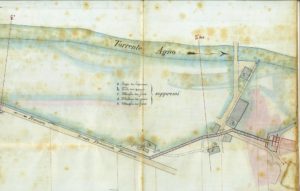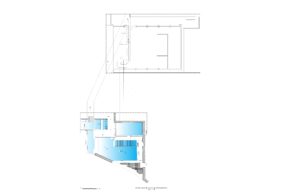The district of Maglio di Sopra, located about two kilometers north of the center of Valdagno, has always represented an area of intense craft and proto-industrial work.
This is already revealed by the toponymy: the area took its name from two hammers (“Vecchio” and “Nuovo”) built respectively in the sixteenth century and at the end of the eighteenth century. But there were also some mills, follies, a sawmill, a dyehouse, a marble mill. Small factories all moved by the water of the Maglio di Sopra canal.
The second factory of Lanificio Marzotto, inaugurated in 1884, radically changed its history. Intended for the production of combed cotton, more profitable but much more energy-intensive, it risked bringing the company to a real energy bottleneck. This was solved by engineer Alessandro Marzotto, with a series of interventions throughout the upper Agno Valley.
The first one concerned the area of Maglio di Sopra and its canal. The project presented in 1894 foresaw in fact a radical modification of its course (significantly called since then Marzotto canal): it was no longer winding to animate the various factories, therefore destined to be closed, but directed towards the new factory of the company.
Of particular architectural importance is a canal bridge about two hundred meters long, with arches and masonry banks, which led to the loading tank, inside the same wool mill. In the twenties of the twentieth century, and perhaps even earlier, the arches of the canal turned out to be improvised makeshift dwellings. A penstock about twenty meters long then led the water to the two Francis turbines (initially three on two different jumps).
The plant is not currently in operation.















